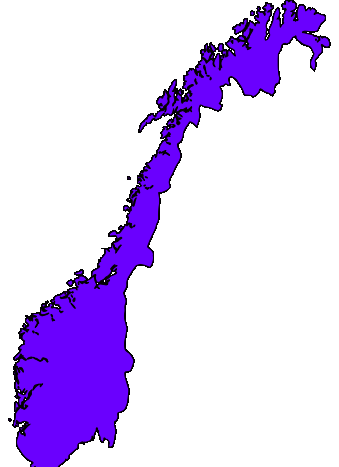The PURPLE Study

Pregnancy and delivery outcomes in Norway and possible associations to:
- Population changes
- Socioeconomic differencies
- Regional differences
- Differencies in clinical routines
- Use of obstetrical interventions
Background
Pregnancy and childbirth are periods in a woman's life characterized by substantial physical and psychological transformations, which may exacerbate underlying disease predispositions. While pregnancy and childbirth are physiological states, they may encompass potential health challenges. The primary objective of prenatal and perinatal care is to safeguard the well-being of the mother, the child, and the entire family throughout the pregnancy, childbirth, and postpartum phases, and to mitigate complications associated with these events. Careful prenatal and perinatal care is crucial for the long-term health of both the mother and the child.
Although perinatal and maternal mortality and severe morbidity rates are low in Norway, disparities can still be observed among different groups of women. Clinical practices in managing pregnancy and childbirth complications vary not only between countries but also among hospitals within Norway. The Medical Birth Registry of Norway indicates variations in the utilization of obstetric interventions across maternity institutions and differences in the incidence of pregnancy and childbirth complications between regions. Comprehensive studies in such differences are scarce, and their implications for perinatal and maternal health remain unknown.
Several previous studies have focused on how certain patient-related factors influence perinatal and maternal health. These studies reveal that a variety of factors may be associated with adverse pregnancy and childbirth outcomes. Factors such as maternal age, chronic diseases, parity, body mass index, marital status, and smoking habits have been extensively investigated in prior pregnancy-related research, whereas the significance of socioeconomic status, educational level, and immigrant background has been less frequently examined. Additionally, the interplay between maternal, fetal, obstetric, regional, and socioeconomic factors has been inadequately explored in Norway.
The recurrence risk of various pregnancy outcomes and complications is also largely under-researched and constitutes a crucial aspect of the PURPLE study. By analyzing data from the Medical Birth Registry of Norway (MBRN) based on each woman's cumulative number of pregnancies, one can estimate the recurrence risk of complications. This information is vital for the planning of pregnancy and childbirth care and for identifying high-risk women who may require delivery in higher level of care. Identifying women with high-risk profiles allows for the strategic planning of their antenatal care, timing and method of delivery, and the selection of appropriate delivery sites.
The overarching aim of the PUPRLE Study is to generate new insights into the complex relationships among a wide range of risk factors and their associations with adverse maternal and perinatal outcomes. This knowledge will be instrumental in the planning and optimization of obstetric care.
About the project
The project was evaluated and approved by the Regional Committee for Medical Research Ethics in South-Eastern Norway in 2015, and the approval is renewed several times (in 2017, 2019, 2020 and 2023). The project is based on data from Medical Birth Registry of Norway and Statistics Norway. Data on all births in Norway in 1967-2014 was received in 2016, new data on years 1967-2018 in 2020, and the newest data (1967-2022) was obtained in 2023.
Goals and achievements
The main aim is to explore a broad spectrum of pregnancy and delivery complications, time trends and risk factors for these complications.
Thirteen papers are published so far, on following topics:
- Preeclampsia
- Immigrant women’s risk for pregnancy complications
- Preterm birth
- Postterm birth
- Intrapartum stillbirth
- Adverse fetal outcomes in term and postterm pregnancies
- Caesarean section
- Pain relief during labor
- Obstetric anal sphincter injuries (OASIS) in instrumental deliveries
- Body mass index and pregnancy complications
Papers in pipeline:
- Risk factors for stillbirth
- Delivery modes in twin pregnancies
- Diabetes and stillbirth time trends
- Obstetric anal sphincter injuries (OASIS) in spontaneous deliveries
- Episiotomy and OASIS
PhDs based on The PURPLE Study:
Completed:
Kristina Baker Sole, completed in 2022
Tiril Tingleff, completed in 2023
PhDs, ongoing:
Collaborators
Norway:
- Tormod Rogne, MD, PhD, Department of Community Medicine and Global Health, Institute of Health and Society, University of Oslo
- Jeanette Magnus, MD, PhD, Center for Global Health, Institute of Health and Society, University of Oslo
- Kathrine Fodstad, Bærum sykehus, Vestre viken HF
Internationally:
- Sari Räisänen, RN, RM, MNSc, PhD, Adjunct Professor, Laurea University of Applied Sciences, Vantaa, Finland.
- Harvey Kliman, MD, PhD, Yale University, New Haven, USA.
- Jennifer Hutcheon, MSc, PhD, Assistant Professor, University of British Columbia, Vancouver, Canada
- Lauren Christiansen-Lindquist, MPH, PhD, Assistant Professor, Department of Epidemiology, Rollins School of Public Health, Emory University, Atlanta, USA
- Seppo Heinonen, MD, PhD, Professor, Helsinki University Hospital, University of Helsinki, Finland.
- Khaled Ismail, MSc, MD, PhD, Professor, Professor of Obstetrics and Gynaecology, Charles University, Pilsen, Czech Republic
- Magdalena Jansova. MSc, Charles University Prague, Pilsen, Czech Republic
- Vladimir Kalis, MD, PhD, Charles University Prague, Pilsen, Czech Republic
- Jan Willem deLeeuw, MD, PhD, Ikazia Hospital, Rotterdam, Netherlands
- Renaud de Tayrac, MD, PhD, Professor, Caremeau University Hospital, Nîmes, France
